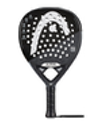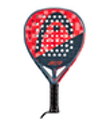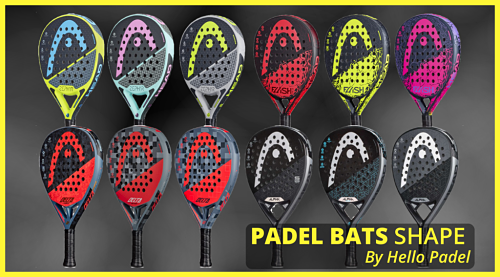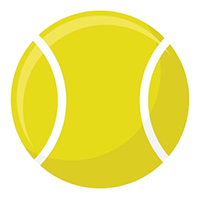Which Padel bat do you prefer or like more?
Leaving aside considerations like price or aesthetics, there are a few characteristics that determine how the padel bat performs in your hand and these should be main characteristics to be considered when choosing your Padel bat.
SHAPE OF THE PADEL BATS


Round-shaped bat. Its low balance, close to the handle, let you gain a higher control of the ball, yet compromising it for a weaker hitting. Highly recommended for padel beginners.


Teardrop-shaped bat. Less flatten on the top of its head than a diamond bat. This sort of racquet brings together the features of the 2 previous types, so it’s a more balanced one.


Diamond-shaped bat. More flatten on the top of the head. As a general rule, this kind of racquet has a higher balance, so the bat weight tends to be focused on its head. This feature provides a greater power but you may lose your control. In a nutshell, diamond bats are not quite fit for beginners. The Diamond-shaped bats are mainly used for advanced players.
HARDNESS OF THE PADEL BATS
The impact surface is normally a core made of EVA or FOAM covered then with different materials depending on the manufacturer but the most commonly found are: fiberglass an carbon fiber.
EVA rubber is hard, less flexible and gives less power to the ball. Its advantage then resides in its longer durability and more control. EVA is typically used by most manufacturers.
FOAM, on the other hand, is soft, provides a bit less control but much more elasticity and provides more power and speed to the ball. Obviously, this means FOAM has less durable. Lately, some manufacturers have developed a third type of core which combines both EVA and FOAM. This hybrid, is a soft rubber with much longer durability made of a core FOAM surrounded by an exterior EVA rubber.
In general:
- Soft racquets: provide power to your shots as their higher elasticity will give extra energy to the ball. On the other hand, they reduce your control.
- Hard racquets: unlike the soft ones, hard racquets provide control and power.


- High: these bats are called “big heads” because they have the weight closer to the head of the bat, at the opposite end of the handle. Despite weighting less, placing the weight at a further distance from our hand will make us feel that they weigh more. These types of bats will give us a lot of power, but can overload the wrist as the weight is farther out and so the leverage produced is higher (we will require more strength to hold the racquet). High balance racquets usually have a diamond shape at the top.
- Middle: the weight is a little closer to the handle which will give us a better handling of the bat, thus more control, and provide less stress to rest the wrist. Balanced racquets usually have a teardrop shape and some models can be round in shape.
- Low: weight lies far below, close to the handle and this will give us excellent control, as the hand will be able to move the weight more easily, but we will lose a lot of power which we will miss on the volley and defensive shots. It is a balance used by experienced players with great touch and although it seems contradictory, it is also recommended for beginners due to the fact that will allow them better control. Low balance racquets usually have round shape.
OTHER FACTORS OF THE PADEL BATS
Thickness: Rulebook states the Padel Bats are not allowed to be more than 38mm thick. Kids bats start at 35mm.
Durability: In general, Padel bats are more fragile than tennis racquets. Where as Tennis racquets use solid frames with strings that can be easily replaced when broken, Padel bats are made of soft components that will eventually break with intense use or accidental knocks with the ground and walls. Once broken, a Padel racquet is difficult to repair.
Valued tip: Play to the maximum weight you feel comfortable with, it will increase your shots, and technique. Do not go over your “comfort weight” as it will make you vulnerable for injuries.


 Upgrade now
Upgrade now



